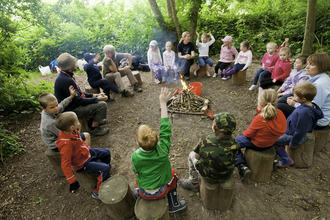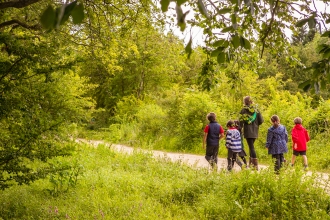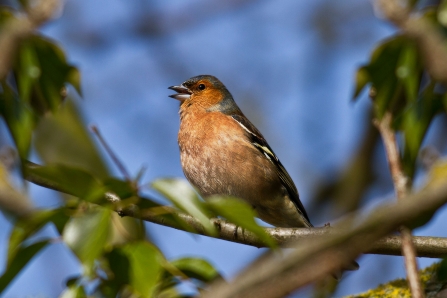
Great reserves to visit in March
Red admiral on blackthorn blossom. Photo by Guy Edwardes/2020VISION

Bernwood Meadows, Bucks
As spring progresses these traditional hay meadows will fill with flowers, from cuckooflower and cowslips to early marsh-orchid and green-winged orchid later in the season.
While waiting for the flowers to bloom, the thick hedgerows are home for lots of different birds. See how many different species you can see or hear. These ancient hedgerows are also important for rare black and brown hairstreak butterflies that fly later in the year.
You could extend your visit with a walk through adjoining Shabbington Wood, which is managed by the Forestry Commission.
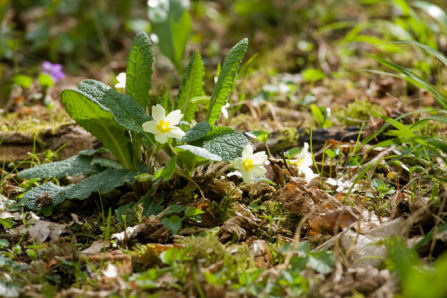
Primroses by Tristain Blaine
Bowdown Woods, Berks
Snowdrops and primroses mark the start of the woodland flowers at this nature reserve. As spring progresses more flowers will start to bloom, leading up to stunning carpets of bluebells later in the season. The woods are filled with bird song at this time of year as birds start to claim their territories ahead of breeding.
The nature reserve has three distinct areas to explore, each with its own character. Learn more about the site with the audio trail that takes you through the section known as Bowdown. Listen as our warden tells you more about the wildlife, history and management of the site. Scan the QR code when you're there, or listen to the trail from the comfort of your home!
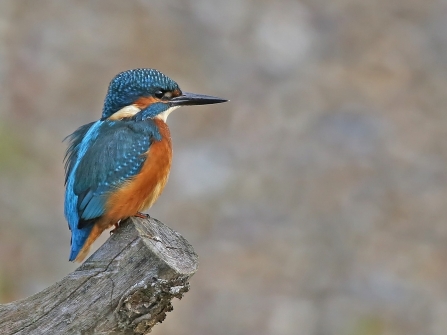
Kingfisher by Margaret Holland
Cholsey Marsh, Oxon
Take a riverside stroll through Cholsey Marsh nature reserve, which sits on the banks of the River Thames. Riverside marshes like this are scarce these days following large-scale drainage for farming.
This site is home to a wealth of plants, insects and birds that depend on the wet reed and sedge beds. The 'super-sized buttercups' are marsh marigolds or kingcups, which love damp places like this. Look out for reed buntings singing in the reeds, and see if you can catch a glimpse of a kingfisher darting past.
The Thames Path National Trail runs through the reserve so it's easily visited as part of a longer walk along the river.

Red admiral on blackthorn blossom. Photo by Guy Edwardes/2020VISION
Rushbeds Wood, Bucks
Rushbeds Wood is great for bird song in spring. See how many different birds you can hear as they stake their claim for territories ahead of the breeding season.
Early spring flowers are starting to appear on the rides and will come into their own as the month progresses. Towards the end of the month, look out for moschatel, otherwise known as the 'townhall clock', or 'Good Friday plant'. The small yellow-green flowers are arranged in a fascinating way, at right angles to one another, like the faces of a town clock.
On warm spring days you might also see early butterflies like brimstones and red admirals flying in the sunshine, searching for nectar to drink.
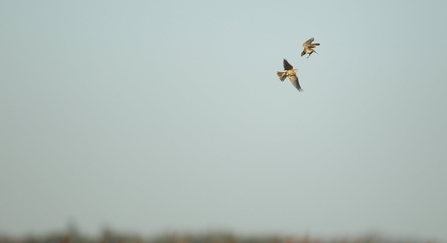
Skylarks by Luke Massey/2020VISION
Wells Farm, Oxon
Listen out for skylarks singing high above Wells Farm, their endless song pouring down from overhead. This working farm is run in harmony with wildlife and is home to lowland farmland birds like yellowhammer and grey partridge. Seed-bearing crops provide food and shelter for mixed flocks of finches in the colder months and wide grassy banks provide cover for spiders and insects.
The nature reserve is named after the numerous springs emerging on the valley side. Explore the site via the short, circular Wildlife Walk.
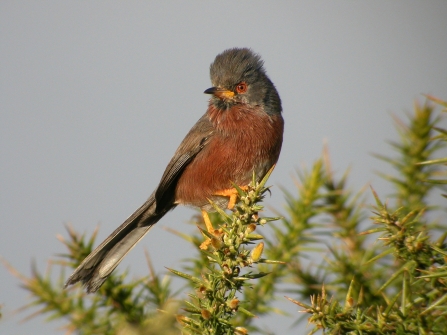
Dartford warbler by Paul Roberts
Wildmoor Heath, Berks
Explore Wildmoor Heath with dry feet thanks to a new section of boardwalk and raised path installed following funding from Biffa Award. As well as keeping your feet dry, this helps to limit disturbance to the reserve's special wildlife like the ground-nesting birds, and reptiles.
Listen out for birds like chiffchaff, stonechat and Dartford warbler. On warmer spring days you might even catch a glimpse of a basking lizard.
Discover more local wildlife at one of our events
Stay up-to-date with our work
Sign up below to receive the latest news from BBOWT, tips about how you can help wildlife, plus information on how you can get involved.




